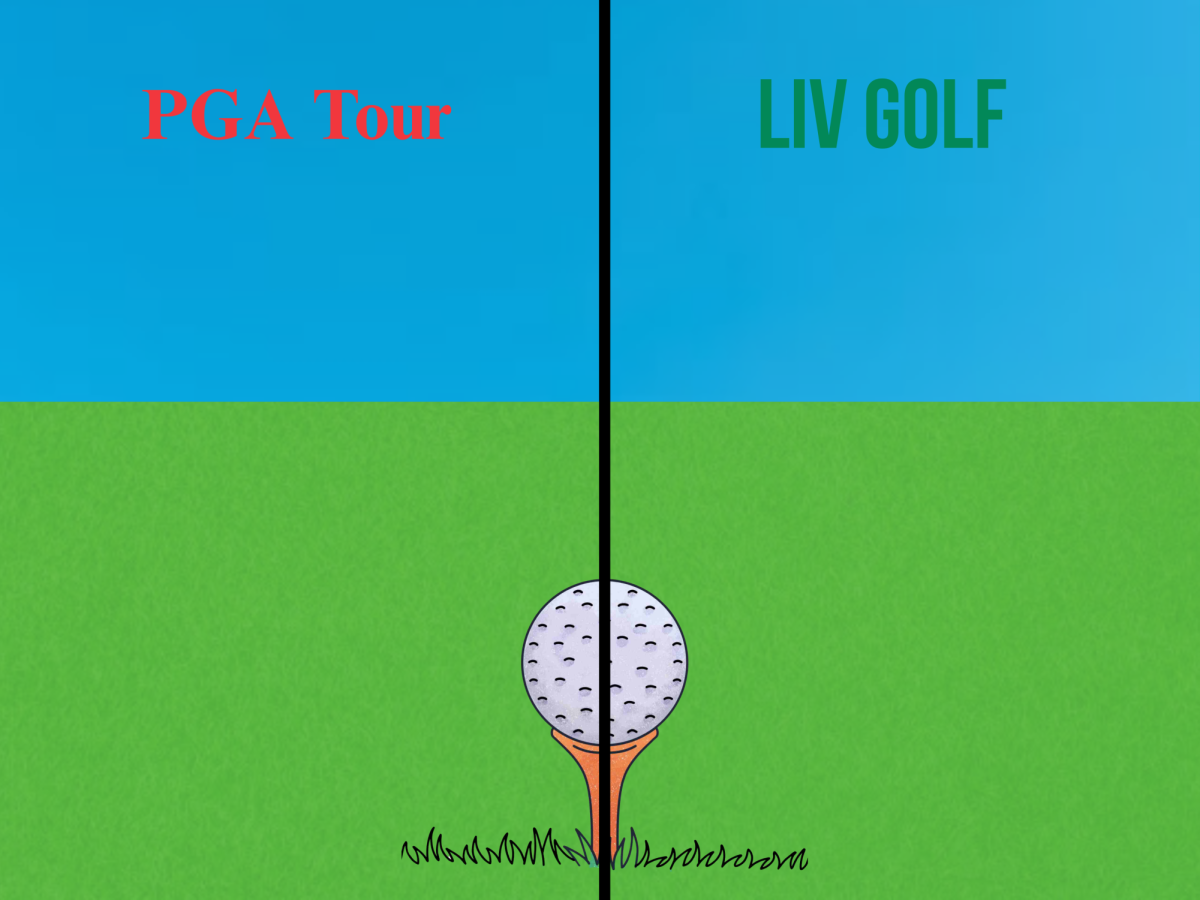On the golf course, everything is kept quiet, calm, and controversy free. The same cannot be said for the golf world itself. This is due to the recent development of the LIV Golf league which competes with the traditional Professional Golfers’ Association (PGA) Tour.
In order to understand the history of the PGA Tour, we must first discuss the history of the PGA of America. In 1916, the PGA of America was founded by Rodman Wanamaker with the purpose of supporting professional golfers and growing the sport in America. The PGA of America would host several major golf championships, such as the Ryder Cup and the PGA Championship, but would never organize a professional golf tour.
This led to the formation of the PGA Tour in 1968, as professionals wanted more control over prize money and scheduling. This separated them from the PGA of America’s focus on promotion and education. This meant that players had a full season of events rather than an occasional championship.
Over the years the PGA Tour has featured legendary players such as Jack Nicklaus, Arnold Palmer, and Tiger Woods as well as incredible modern players like Scottie Scheffler, John Daly, Rory McIlroy, and Xander Schauffele.
For years, the PGA Tour went uncontested as the official way to golf professionally. The idea for a rival golf league has existed for years, but that was it, just ideas. However, in October 2021, the LIV Golf league was created as an alternative to the PGA Tour by former number one golfer in the world, Greg Norman.
LIV Golf is experimental and breaks away from the traditions of golf. The PGA Tour has golfers compete over four days in 72 holes. After 36 holes, or two days of golf, only the top 70 players will move on. Each PGA golfer is assigned a tee-time and must at their assigned tee-time, either on the front or back nine. LIV Golf is completely different. Instead of playing 72 holes over four days, LIV golfers play 54 holes over three days. This is why it’s called “LIV”, because 54 in Roman numerals is LIV. In LIV Golf, there are no cuts either. Every golfer plays all 54 holes, no matter what they score the first day. Another key difference is that LIV Golf has players do a “shotgun start”, where each player starts at once, but on a different hole.
Perhaps the biggest difference is that LIV Golf has a team component to each match. Each player contributes to an overall team score while still competing for individual prizes. This sets LIV Golf apart from the traditional structure of the PGA Tour where everything is completely individual.
Beyond the gameplay aspect, LIV Golf has also garnered attention for the source of its funding. LIV Golf is owned and funded by the Saudi Arabian Public Investment Fund (PIF). The Saudi Arabian PIF is an organization in Saudi Arabia designed to invest in anything that may help the development of the Saudi Arabian Economy. This has been a source of controversy ever since LIV Golf first began.
The Human Rights Watch, an organization dedicated to investigating and exposing human rights violations across the world, claims that LIV Golf is “sportswashing.” In other words, they believe Saudi Arabia is using LIV Golf as a tool to distract from their poor treatment of citizens and numerous human rights violations. This has caused fans to question the ethics of the LIV Golf league’s funding.
LIV Golf has gone on to recruit several golfers from the PGA Tour by offering substantial monetary incentives. Reportedly, players have received tens of millions of dollars to hundreds of millions of dollars as a signing bonus. They have signed golfers such as Bryson DeChambeau, Joaquin Niemann, and Jon Rahm. LIV Golf did try to sign golf legend Tiger Woods as well, but he declined the offer despite the large signing bonus.
Tensions between the two leagues are high. Currently, LIV golfers are prohibited from playing in PGA Tour and it seems there are no plans for that to change. LIV golfers also are unable to receive Official World Golf Ranking (OWGR) points from LIV Golf events. This means that they are only able to receive points on other tours or through participation in major tournaments such as the Masters at Augusta.
It is worth noting that there was a proposed merger between the two leagues, but the PGA Tour formally rejected the offer. The proposal included a $1.5 billion dollar investment from the Saudi Arabian PIF to the PGA Tour but also called for the continuation of LIV Golf and a prominent role for PIF Governor, Yasir al-Rumayyan. The PGA Tour did not agree with these terms which caused the proposal to fail.
The PGA Tour has always been an option for golfers looking to golf professionally, but with the rise of LIV Golf, golfers now have another option. The existence of a second league gives golfers more control over their career and sparks a debate about the future of the sport. However, this choice has led golfers to decide: should they stick with the traditional, prestigious PGA Tour or the modern, more lucrative LIV Golf?




























